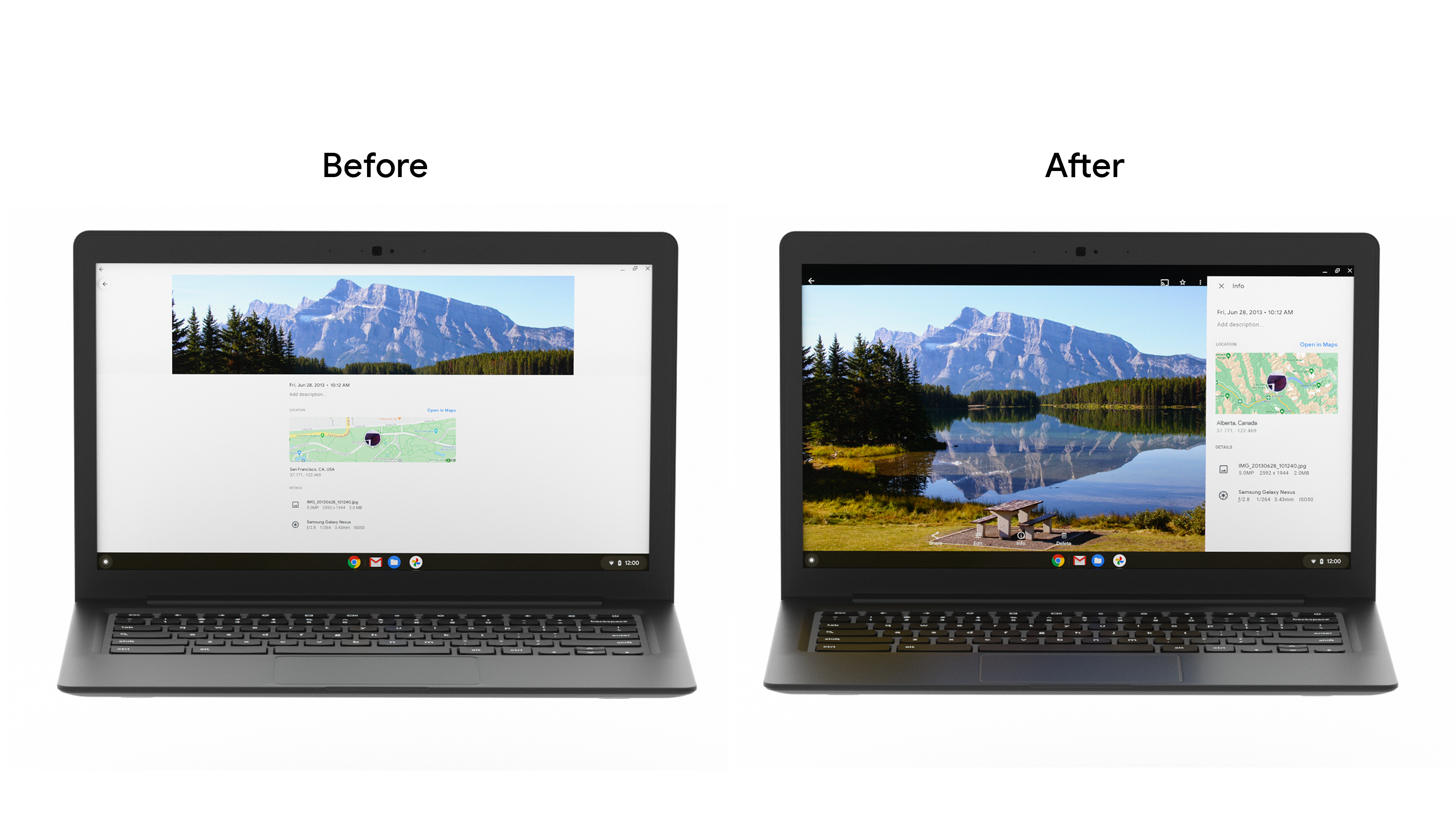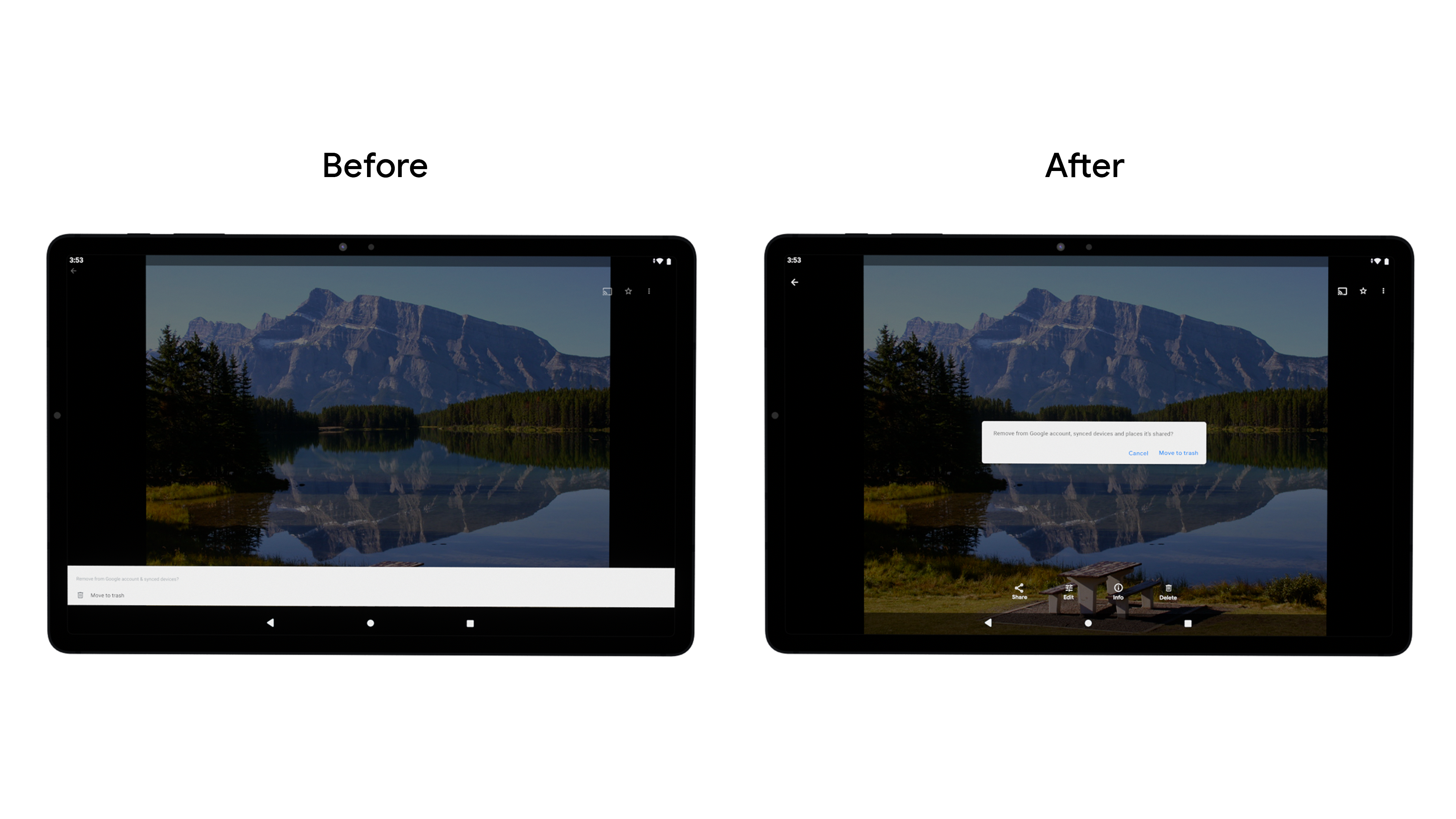Google 相册是您美好回忆的存放地,其开发团队认为用户应该能够在所有设备上欣赏这些回忆。为确保该应用的功能可在 Android 平板电脑、可折叠设备和 ChromeOS 设备上正常运行,他们投资开发了适合所有屏幕的响应式布局。
策略
Google 相册开发团队仔细考虑了如何针对大屏设备修改布局。他们依靠易用性最佳做法和研究来确定如何针对大屏设备修改布局。首先,他们改进了网格布局,即当屏幕大小超过 600dp(平板电脑)和 1008dp(笔记本电脑)时,降低密度。这可让用户更轻松地在较大的外形规格上查看和滚动浏览照片。

然后将信息面板底部的抽屉式导航栏替换为边栏。由于平板电脑和桌面设备的屏幕通常在横向模式下使用,因此这一变更可减少在较宽屏幕上的拉伸,并针对平板电脑用户手持设备的方式提供更好的人体工学体验。他们还改进了底部动作条对话框,并添加了信息提示控件,以便在大屏设备上更轻松地显示用户消息。

他们将导航组件从底部栏更改为垂直侧边栏,以便用户更轻松地导航和完成任务。虽然 Google 相册是在自己的代码库中构建此组件,但开发者可以使用新的侧边导航栏 Material 组件构建此组件,以便改进人体工程学、减少拉伸,并增加垂直滚动应用的屏幕空间。
此外,开发团队还实现了动态调整网格大小,以简化不同折叠状态和屏幕尺寸之间的转换,并改进了为键盘和触控笔等配件提供的支持。随着使用 ChromeOS 设备提高工作效率的消费者数量不断增长,确保应用支持各种输入法(包括键盘、鼠标和触摸)变得越来越重要。
成果
该团队通过 A/B 测试发布了这些更改,发现大屏设备上关键产品功能的日活跃用户数总体增加了,Archive 的使用量增幅高达 53%。Google 相册团队将继续致力于改进所有屏幕尺寸下的用户体验,确保在所有设备上都能提供出色的体验。
开始使用
详细了解如何开始针对大屏设备优化应用。

